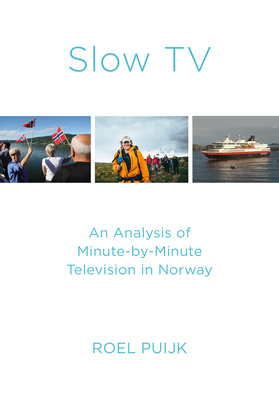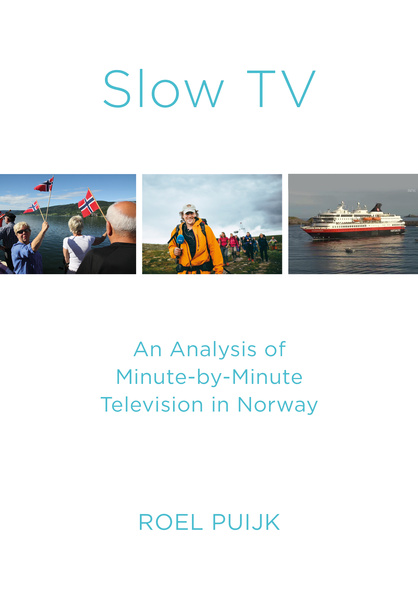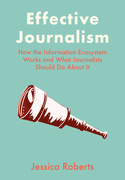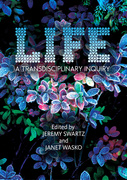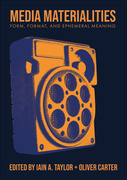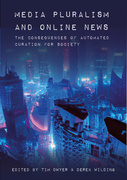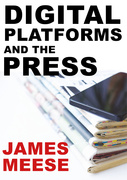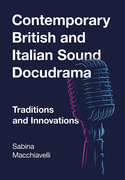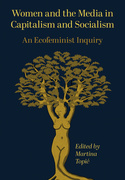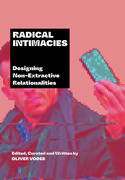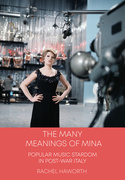Slow TV (Book)
An Analysis of Minute-by-Minute Television in Norway
Slow TV, developed by Norwegian public service broadcaster NRK, is broadcasting in which the event on television lasts as long as in real time, and has been adopted by others including BBC Four and Netflix. This unique study discusses concepts of slowness, innovation, genre, media event, reception, local and national identity. 56 col. illus.
Edition
Slow TV has become a familiar feature of broadcasting in Norway. It refers to a set of programmes produced by the Norwegian Broadcasting Corporation (NRK) since 2009, starting out with a seven-hour broadcasting of the train ride between Bergen and Oslo.
The concept of slow TV and ‘minute-by-minute’ broadcasting was developed so that the event on television lasts as long as in real time. Several broadcasters outside Norway, including BBC Four, YLE, SRF and Netflix, have now taken up the concept of slow TV.
The first study of this genre, this highly original book explores three different aspects of the phenomenon of slow TV: the perspective of the broadcaster, the perspective of the producers and other actors involved in the production of the programme, and that of the audience.
It goes beyond the question of genre and considers how slow TV fits into television scheduling and how the audience appeal can be understood within broader concepts such as media events, media tourism, reception and national identity. Public service broadcasters can be seen as having more opportunity to experiment, and slow TV can be seen as a good example of public service programming. What attracts viewers to the programmes is that they invite a contemplative mode of watching: there is a chance to see something unexpected, or to be introduced to interesting new things.
Illustrated throughout in full colour, using stills from broadcast programmes.
This book will appeal primarily to an academic readership, both researchers and students. Most readers are likely to be involved with media and communication studies, cultural studies and film studies. It will also be of interest more generally to the humanities and social sciences fields as it touches on topics such as national and local identity, popular culture, Nordic lifestyle, well-being, tradition, community and popular culture.
Roel Puijk is Professor of Film and Television Studies at Inland Norway University of Applied Sciences, Lillehammer.
Previous publications include:
Bakøy, Eva, Puijk Roel & Spicer Andrew (eds) (2017). Building Successful & Sustainable Film & Television Businesses: A Cross-National Perspective. Bristol: Intellect.
Bakøy, Eva & Puijk Roel (eds) (2012) Kvalitet i visuelle medier [Quality in visual media] Kristiansand: IJ-forlaget.
Puijk, Roel (ed.) (2008) Fjernsyn i digitale omgivelser [Television in a Digital Environment]. Kristiansand: IJ-forlaget.
Puijk, Roel (2016). Limits to Change. A Case Study of an Attempt to Innovate in NRK’s Factual Programming during the Mid-1980s. Nordicom Review, 37(1).
Puijk, Roel (2015). Slow-TV – a successful innovation in public-service broadcasting. Nordicom Review, Volum 36.(1).
Puijk, Roel (2014). Tv og nett - en produksjonsstudie fra norsk fjernsyn. Norsk Medietidsskrift, Volum 21.(1) s. 24-41.
Preface
Introduction
Slow TV – a public service concept?
Slow TV as media event - Hurtigruten
Skibladner: Slow TV and Media Tourism
Mountain hiking – minute by minute
Audience response to slow-TV
Conclusion
List of interviews
'One of the strengths of the book is the way perspectives on greater topics, such as the dualism of nature and culture, national identity, the concept of time, are combined with close analyses of the experience of liveness and the practical and aesthetic choices behind the productions, right down to the choice of cameras and other equipment. While three programmes are studied in detail, the book also provides an overview of developments and contextualisation, thus providing perspectives that are relevant for slow TV outside Norway, as well as television production more generally. [...] The book is richly illustrated, has a lot of informative tables, and is clearly structured and well-written throughout. [...] This will probably be the defining book on the topic since it covers so many aspects of the production, reception, contents, and aesthetics of these programmes.'
'[The book] offers theoretical and applied guidance for students interested in public broadcasting, with useful and interesting data from all three sides of the media industry/text/audience triangle. Additionally, this book can be an inspiring jumping off point for scholars who are interested in the burgeoning topics of sustainable TV (which Puijk has also published on) or in pushing forward the relationship between public service broadcasting and ideology. Slow TV by Puijk is an important foundational text on a certainly understudied TV genre which will help support the work of public broadcasting scholars.'

